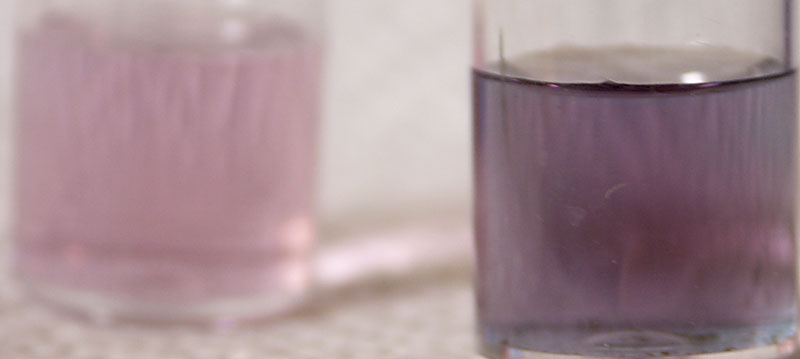The trouble is that judging the end-point using the types of indicator dye suitable for this type of test is quite difficult. Unlike some indicator dyes, there is not an abrupt transition, and there are intermediate colours over quite a wide pH range, which confuses things.
It seems that Salifert have been struggling with the way people perceive colour. Early Salifert kits had what was probably a Methyl-Orange indicator, judging by its static colour. Then they changed the indicator to what is probably a methyl-red / bromocresol-green combination, again judging by its static colour. Then they changed the instructions and included the check solution. Now they seem to have changed the instructions again, four drops of indicator instead of two, and the table has been adjusted slightly too. Whereas the zero row (1 millilitre of reagent used up) was 5.71 meq/l, it will now be something lower, probably 5.48 based upon interpolation from earlier posts on here. That will cock up the mathematical approach if someone uses the wrong number.
One has to wonder why Salifert have changed it yet again. In the end it is only an approximation; these indicator dyes are a bit woolly and do not reflect the true bicarbonate end-point, even pH 4.5 by pH meter is not the true bicarbonate end point - it is fine for comparison purposes and basic quality control, but not particularly accurate on a quantitative basis, particularly at low alkalinities where small errors make a big difference. The true bicarbonate end point shifts depending upon the original composition of the water, anything from pH4.2 at high alkalinities to pH5 at low alkalinities, plus the effects of other species in the water.
Four drops of indicator will obviously give a stronger colour, but I take back the dilution effect - I wasn't thinking straight. The volume (4ml) is measured before the indicator is added, so the amount of carbonate, in absolute terms, is going to be exactly the same, so it is going to take exactly the same amount of titrant to neutralise it. The only way that the indicator can have an effect is if it is not pH-neutral, but I don't know how likely that would be.
Yes it is irritating that the syringe vs the results table go the wrong way round, at least from the intuitive point of view. It must have caught lots of people out.

























![BREWING THERMOMETER STICKERS ACCURATELY MONITOR FERMENTING BEER & WINE LIQUID TEMPERATURES 5PCS HOME BREW SPIRITS WINE LCD ADHESIVE [US]](https://m.media-amazon.com/images/I/311DDjo2X3L._SL500_.jpg)
















